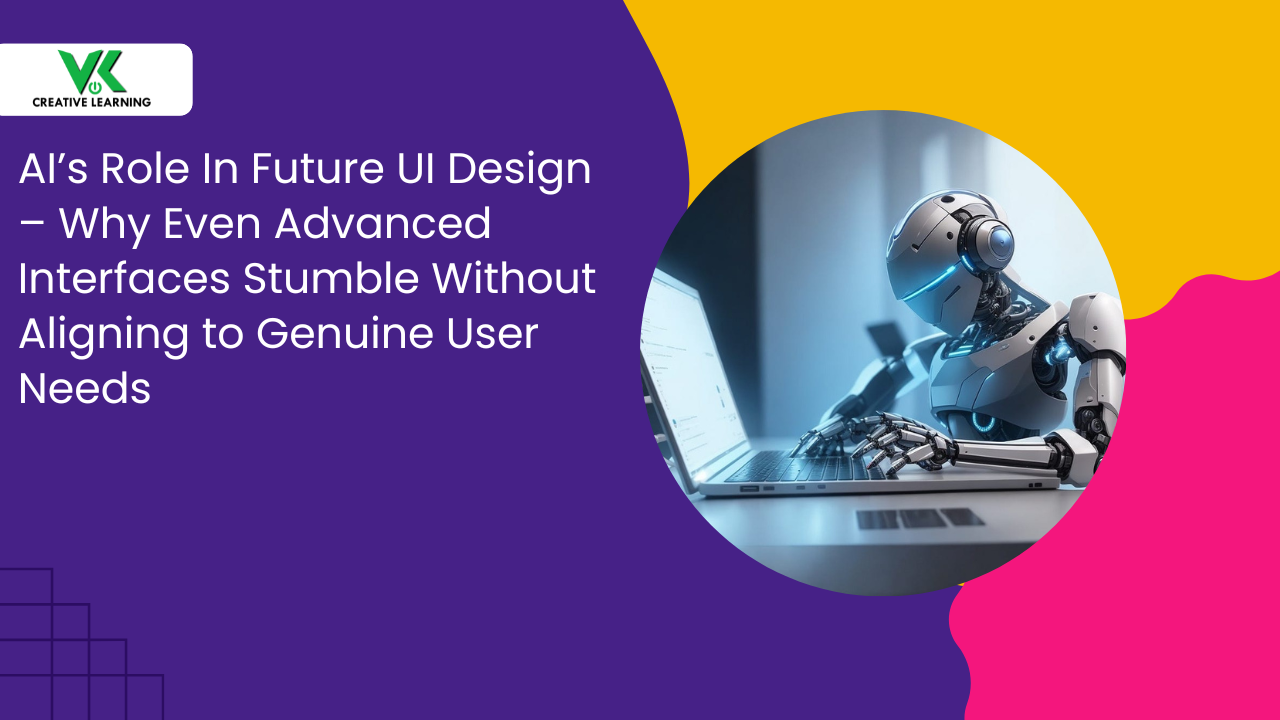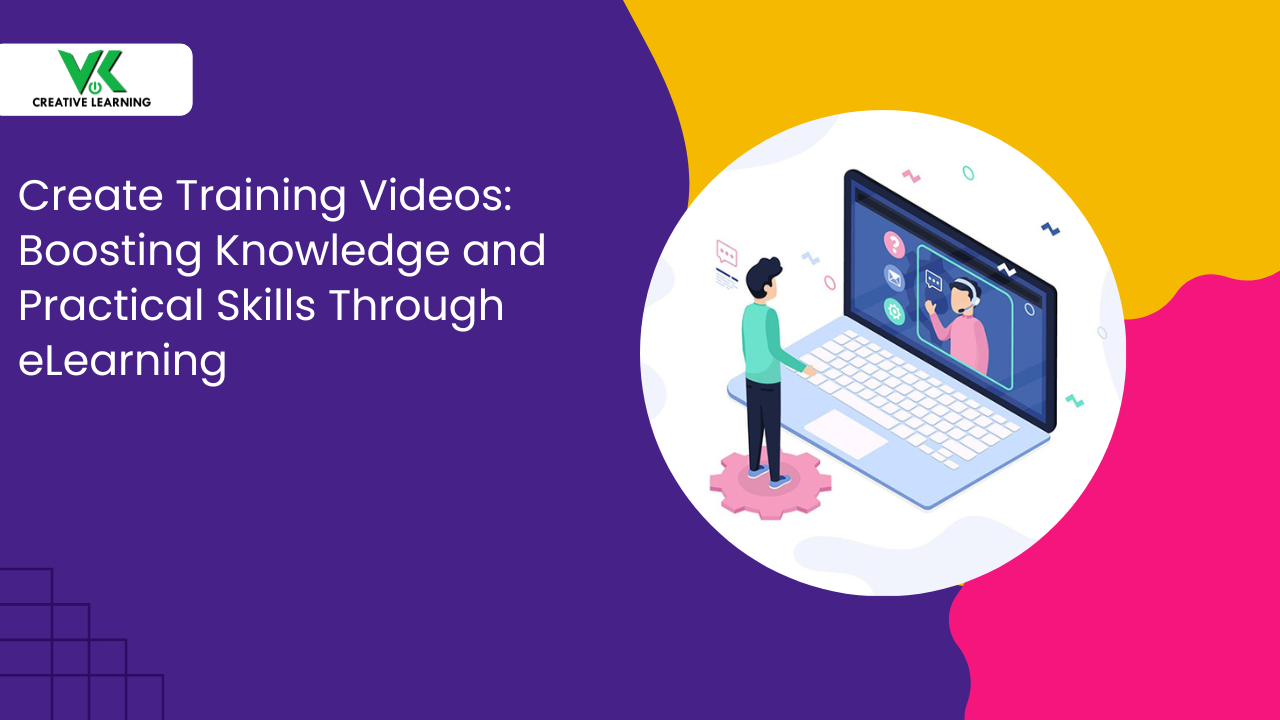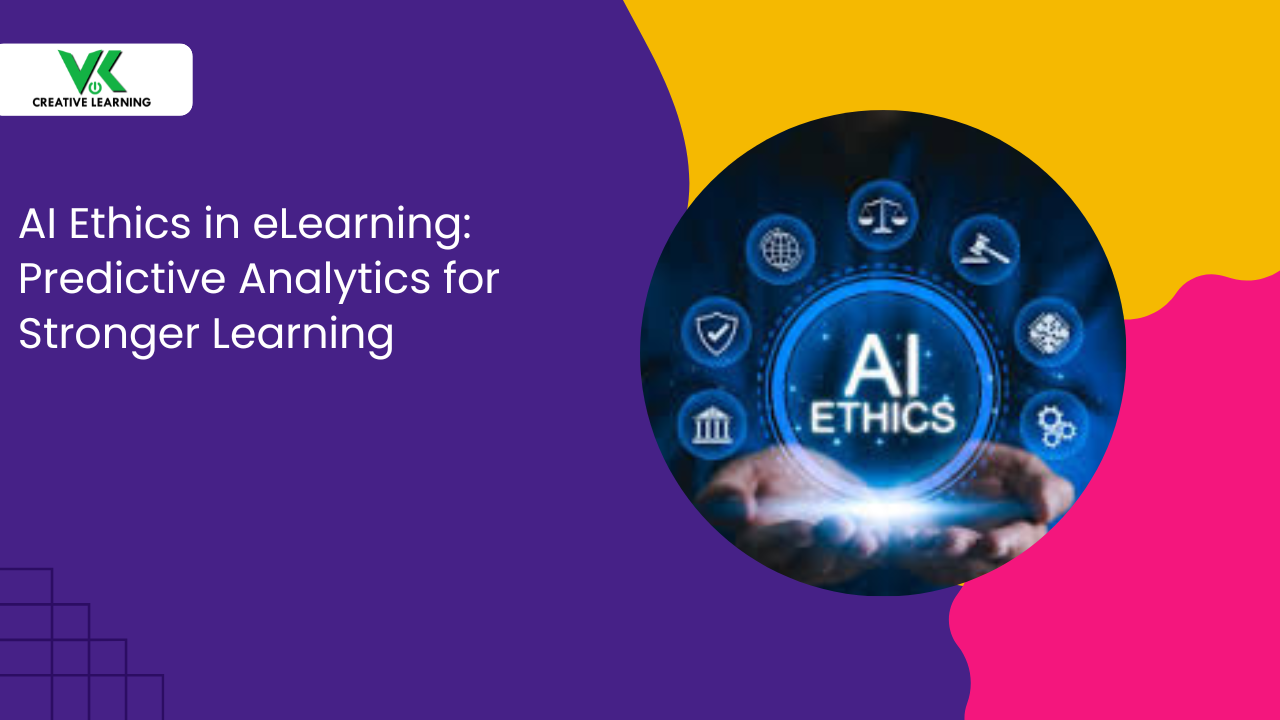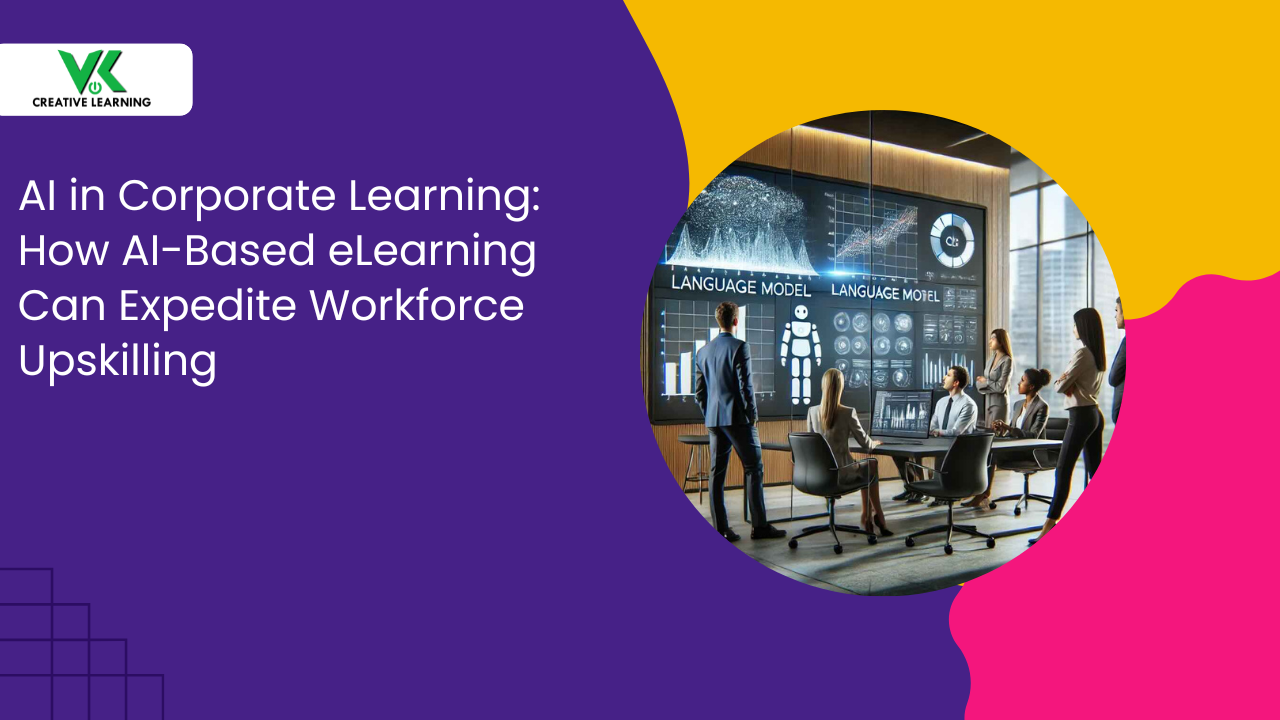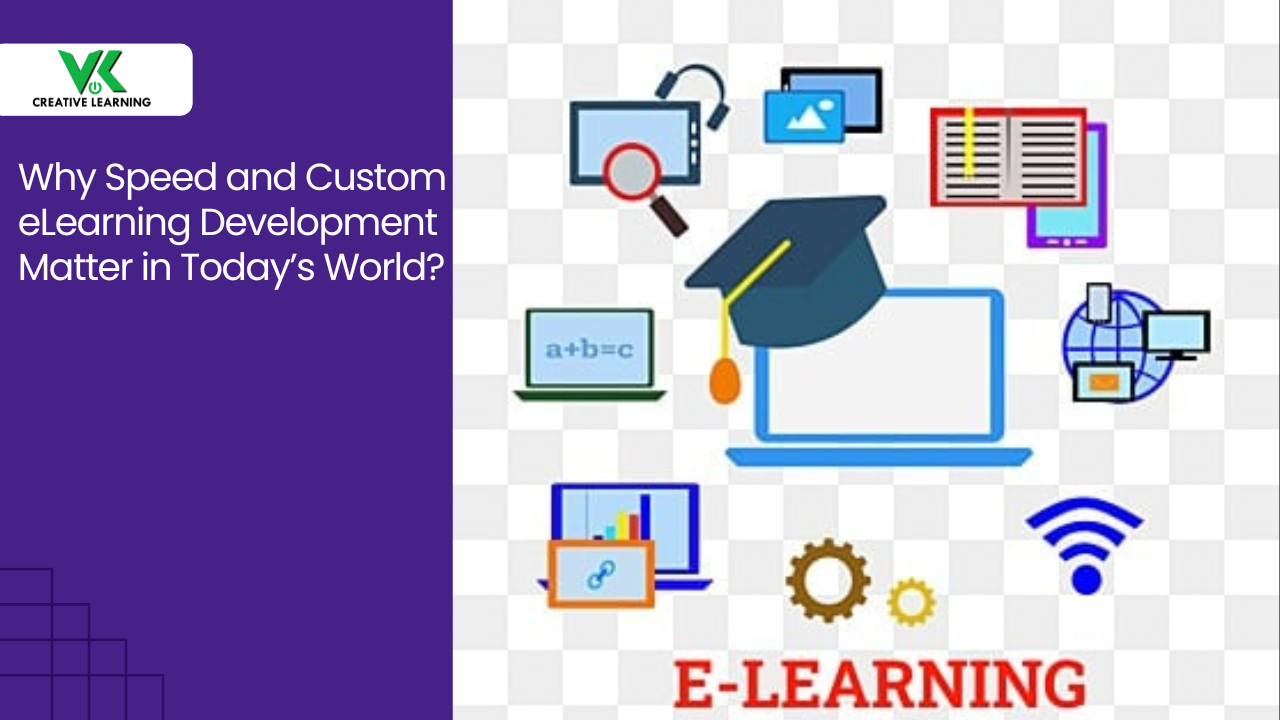From Static to Stunning: K12 Content Development for Interactive 3D, Gamification & AI-Driven Learning
March 27, 2025
Today’s world is competitive and so has the academic landscape become the one. Hence, making use of run-of-the-mill educational materials may fail to capture students' imagination.
Precisely put, static visuals or dull presentations may lead to disengagement. Besides, outdated classroom posters, chalkboard-only lessons, and printed worksheets may not be appealing too.
Consequently, with the utilization of rigid and uninteresting delivery teaching methods, students' involvement in lecture, retention, and comprehension go for a toss. Thus, monotonous lecture slides, fixed textbook layouts, and conventional handouts may not be the ideal resources always.
Moreover, with technological innovations happening, fresh approaches would help the cause. And, K12 education online can be an option. In other words, K12 e-learning involves 3D explainer visuals, gamification, and AI-driven learning -- interactive in nature.
This aids to spark curiosity among learners. Their use can lead to: immersive museum displays, interactive science demos, and dynamic tech showcases.
Wouldn't these be exactly what the students need to kindle their interest and know more about the topics?
Challenges With Conventional Methods and How K12 E-learning Can Be Helpful
Historically, educational content designs with interactive elements are given little emphasis. Thus, educators struggle with static materials. This happens with respect to modern learners’ needs. The problems may occur due to: non-responsive whiteboard sessions, inflexible projector slides, and unadaptable printed material).
Simultaneously, the rise of digital transformation has made a big difference. Hence, in many institutes, a need for dynamic teaching strategies has arisen. In addition, students may tend to have diverse learning styles.
Also, cultural contexts play their own role. These contexts call for versatile teaching as well as learning\ platforms. Therefore, a medium like K12 e-learning can be helpful as it offers customization in many aspects.
K12 education online not only focuses on interaction but also on content localization (including video localization). Examples include: multilingual museum tours, region-specific public displays, and adaptive seminar presentations.
Another challenge may arise due to curriculum designs -- unstructured and complex. This will have a direct impact on students' motivation. Also, the same feeling may arise from outdated pedagogical methods.
However, K12 content providers in India incorporate multiple aspects in the K12 e-learning courseware. These distinguishing features include interactive 3D with gamification and AI-driven approaches. These factors can in many ways revitalize course delivery. Reason: the platform merges fascinating visuals (2D or 3D) with intelligent personalization.
Best features: augmented lab simulations, virtual reality exhibitions, and interactive digital kiosks.
Furthermore, schools can have issues while preparing students and expanding learners' knowledge using legacy content. This can involve: static lab manuals, unmodified textbooks, and unaltered historical slides.
Therefore, K12 content development strategies are coming out with some innovative features in K12 e-learning. Online schools K12 blend creativity with modern technological capabilities. Examples include: dynamic art installations, adaptive educational software demos, and responsive interactive exhibits.
Table Of Contents:
1. Challenges With Conventional Methods and How K12 E-learning Can Be Helpful
2. Understanding K12 Education Online: Redefining School Learning
3. Future and Necessity of K12 E-Learning: A Technological Imperative
4. Why Approach K12 Digital Content Providers in India – Incorporation of Multiple Elements
5. Benefits and Custom Solutions in K12 E-Learning: Transforming Institutional Training
Understanding K12 Education Online: Redefining School Learning
Innovative K12 education online platforms offer interfaces, friendly when using, coupled with gamified assessments. Also, AI provides feedback based on analysis (thanks to high-end algorithms).
This helps educators to meet the varied learning needs of learners -- learning styles and pace. This is accomplished through: adaptive classroom demos, personalized training kiosks, and dynamic instructional modules.
Schools adopt K12 education online platforms to convert conventional classrooms into hubs of digital exploration. Smart integration of interactive 3D visuals and gamification transforms teaching materials into dynamic experiences. Examples: animated historical reenactments, interactive geography maps, and simulation-based math puzzles.
In addition, K12 digital content providers in India incorporate AI-driven analytics in e-learning; helping to know students' progress. This helps to understand how much they are in sync with learning outcomes.
Further, K12 e-learning AI usefulness are: real-time academic dashboards, responsive learning environments, and predictive performance models.
Moreover, K12 online schools can use them to support updates of curriculum swiftly. This plays a big role in aligning with cultural relevance -- courtesy of content localization services.
K12 e-learning also entails both visual and textual content. As a consequence, this move assists to meet regional needs -- content weaved to suit regional preferences. Thus, learning material resonates with different student demographics.
Usefulness are: localized museum exhibits, region-specific science fairs, and community-focused art presentations. Equally, video localization plays a crucial role in translating complex subjects into engaging multimedia formats. Applications are: dubbed instructional clips, regionally adapted documentaries, and culturally tuned video tutorials).
Importantly, K12 education online platforms focus on interactive learning experiences; students absorb concepts easily. These initiatives not only bring transformative educational practices but play a pivotal role to move beyond traditional textbooks.
Thus, a dynamic educational ecosystem can be set up to meet any latest learning requirements. Immersive experiences are brought by: interactive simulation labs, immersive digital art displays, and engaging scientific experiment videos.
Thus, academic institutions prefer to incorporate K12 education online as a method to enhance curriculum. With interactive modules, static content is not preferred -- so advanced digital techniques are used. Further examples include: virtual lab simulations, interactive museum tours, and digital science exhibits.
Future and Necessity of K12 E-Learning: A Technological Imperative
With K12 content development, transformation can be observed -- static to interactive educational content. This implies future readiness with multiple essential aspects through K12 online school.
Moreover, existing academic challenges (that consume time) can be overcome with novel e-learning-based strategies. So, the incorporation of 3D animations (dynamic) and gamification makes sense. Importantly, they bring about a transformation in classroom engagement completely.
For example: with the use of VR museum tours, simulation-based classes, and interactive engineering demos in e-learning courseware, understanding concepts becomes easy.
Infusion of AI by K12 content providers in India further improves instructional delivery. The high-end AI algorithms suggest changes in content based on learners' performance metrics.
For this purpose, real-time analytics in labs, adaptive training in workshops, and predictive assessments are the features incorporated within e-learning.
Why Approach K12 Digital Content Providers in India – Incorporation of Multiple Elements
With changes in technologies that assist learning and teaching, taking the help of K12 content development services is important. K12 content development provides the much-needed infrastructure to support the inclusion of better learning elements.
Also, conventional teaching may not be as effective as a digital medium in explaining complex concepts. Thus, advanced K12 e-learning courseware mixes in interfaces (adaptive and user-friendly) and at the same time, immersive multimedia content.
Examples include: responsive digital kiosks, customizable VR sessions, and interactive projector displays.
Furthermore, the facilitation of content localization in animated form -- 2D and 3D ensures better comprehension. Added to these features are accessibility and context-based relevant content.
Hence, region-specific digital guides, locally adapted art exhibits, and community-tailored science modules are part of e-learning.
To top all, gamification elements are included to bring excitement among learners. The completion of each level is associated with reward systems. These factors help to bring in competitive challenges that inspire learners to gain more knowledge.
The games also incorporate: point-based learning contests, challenge-driven classroom games, and simulation races in workshops.
Thus, there is evidentiary evolution with the incorporation of the latest technologies to make learning smooth. Overall, the blending of interactive 3D and 2D animations, gamification (reward system), and AI features make K12 e-learning the best bet.
Think students learning through: augmented reality science demos, interactive history reenactments, and real-time digital art exhibitions.
Ultimately, the future of education becomes better as static pedagogy is enhanced through a dynamic K12 education online.
Examples of the various features can be by using: smart curriculum updates, interactive performance dashboards, and adaptive modules.
Benefits and Custom Solutions in K12 E-Learning: Transforming Institutional Training
Modern schools and centers have long got big benefits. This has become possible from snappy K12 digital training. Their uses in schools include: school tech labs, coding boot camps, and interactive design hubs.
The K12 education online has always provided lessons in an altogether engrossing way. This has become a reality through the inclusion of 3D explainer animations and game-like plans.
Added to these features are AI tips in K12 e-learning courseware. They help build deep-learning worlds -- render thorough concepts. Thus, the result of K12 content development is lasting knowledge growth.
Some examples in K12 online schools are: lab VR setups, robotics trial runs, and interactive modeling rigs.
Customization choices have enabled exact content. This means schools can add content -- text and videos -- as per their wish. This aids in fixing the problem that arises of keeping strong topic relevance across many regions. Also, they can be rolled out seamlessly as when required.
For example: K12 e-learning can be used to display various situations in VR -- including museum digital archives and science models.
Institutions can also use sturdy K12 content development to create curriculum-based content. Thus, learning modules can be made to meet clear learning needs.
Conclusion
The scope of improvement in understanding of the students becomes massive when the K12 e-learning system is adopted.
For the same, schools and institutes can approach VK Creative Learning (VKCL). VKCL is an acclaimed digital content provider in India known for its forte in K12 education online (K12 e-learning platform).
